Delve into the delightful world of traditional German sweets, where each confection tells a story of heritage and flavor. From marzipan to Lebkuchen, these sweets have been passed down through generations, each with its unique twist. Discover the unexpected secrets that Oma has always known. Prepare for a journey through almond-filled pastries, honeyed delights, and chocolate-covered wonders. This list of 22 items will not only tantalize your taste buds but also reveal the charming anecdotes and histories that make these sweets truly special.
Marzipan

Marzipan, an almond confection, has long been a favorite in Germany. Known for its smooth texture and sweet, nutty taste, it’s often shaped into charming fruits or festive figures.
Did you know? This delightful treat traces back to medieval times when it was considered a luxury. Imagine the joy of receiving such an intricately crafted piece, a symbol of love and celebration.
Today, marzipan remains a centerpiece for German festivities, bridging the past with the present through its enduring appeal and sophisticated simplicity.
Lebkuchen
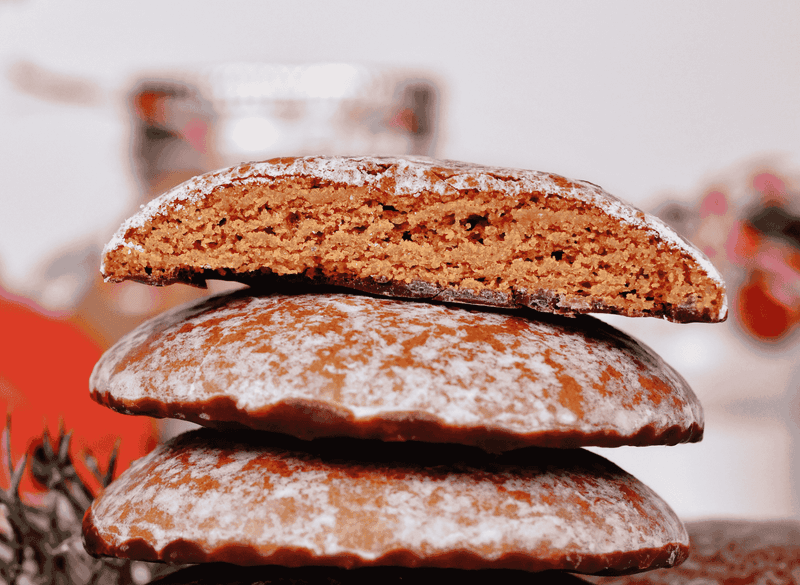
Lebkuchen, a spiced cookie, evokes the warmth of Christmas markets. With its rich blend of ginger, cloves, and cinnamon, it’s a festive treat that dates back to the 13th century.
Legend has it that monks crafted these cookies in the German city of Nuremberg, using honey to sweeten them during harsh winters.
Whether iced or chocolate-covered, Lebkuchen captures the essence of holiday cheer, a sweet reminder of gathering around the hearth with loved ones, sharing laughter and stories.
Stollen
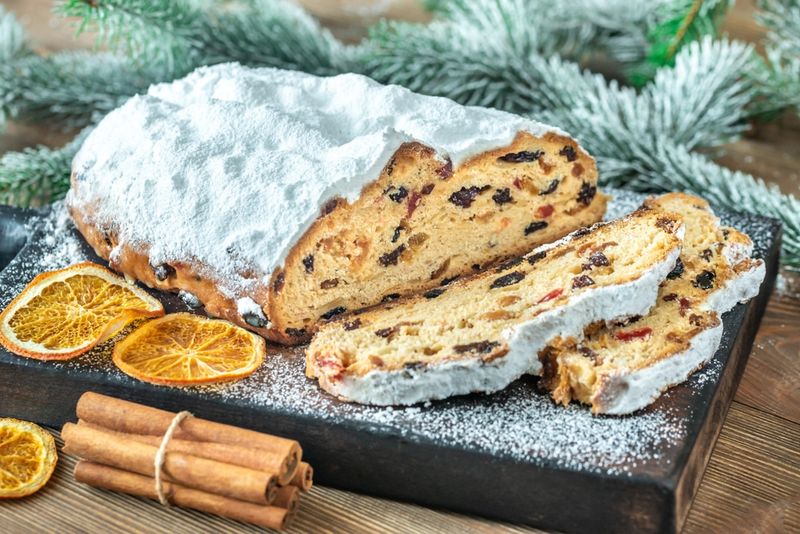
Stollen, a fruit bread, wrapped in powdered sugar, resembles a snowy German landscape. This holiday staple brims with dried fruits, nuts, and a hint of rum, symbolizing abundance.
Originating from Dresden, Stollen has been enjoyed since the 15th century, evolving from a simple bread to a luxurious dessert.
During Christmas, this delicious loaf becomes a centerpiece, its sweet aroma filling homes with anticipation and joy, offering a taste of tradition that’s both comforting and festive.
Black Forest Cake
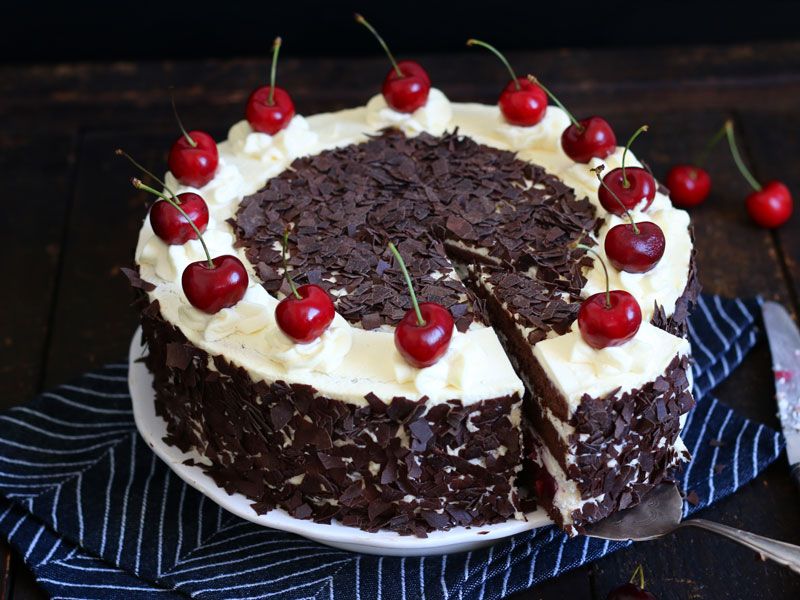
With its layers of chocolate, cream, and cherries, Black Forest Cake is a decadent dessert with a rich history. Inspired by the Black Forest region, it combines local kirsch (cherry brandy) with traditional baking techniques.
First crafted in the early 20th century, this cake’s popularity quickly spread across Germany.
Each bite offers a harmonious blend of flavors, reminiscent of the enchanting forests and cherry orchards that inspired its creation, making it a beloved favorite for celebrations.
Bienenstich

Bienenstich, or “bee sting” cake, is a heavenly blend of honey, almonds, and cream. Legend tells of bakers defending their village from invaders by throwing beehives, inspiring the cake’s name.
Its golden, caramelized top hides a luscious vanilla cream, creating a delightful contrast in textures.
This cake symbolizes ingenuity and resilience, offering a sweet taste of victory and community spirit, best enjoyed with a cup of strong German coffee.
Baumkuchen
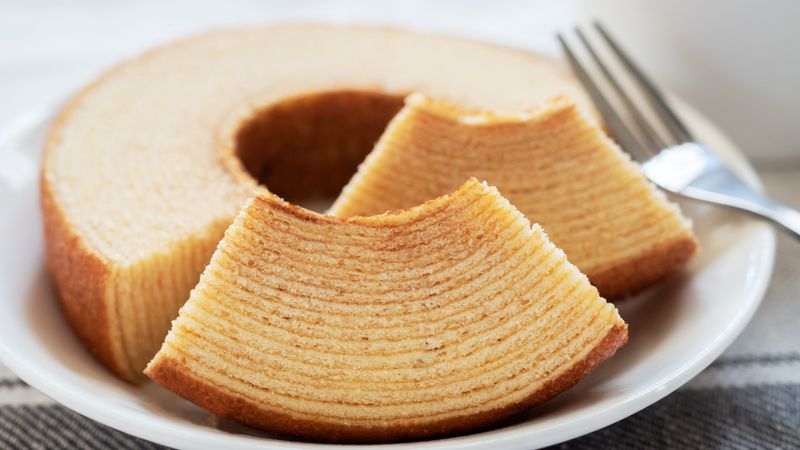
Baumkuchen, known as the “tree cake,” is a marvel of German baking. Its many layers are painstakingly baked on a rotating spit, each resembling tree rings, symbolizing longevity.
Originating in the 19th century, it’s often covered in chocolate or sugar glaze.
This cake is not only a masterpiece of taste but also of technique, a testament to the precision and artistry of German bakers. It’s enjoyed on special occasions, where each slice tells a story of time and tradition.
Quarkbällchen
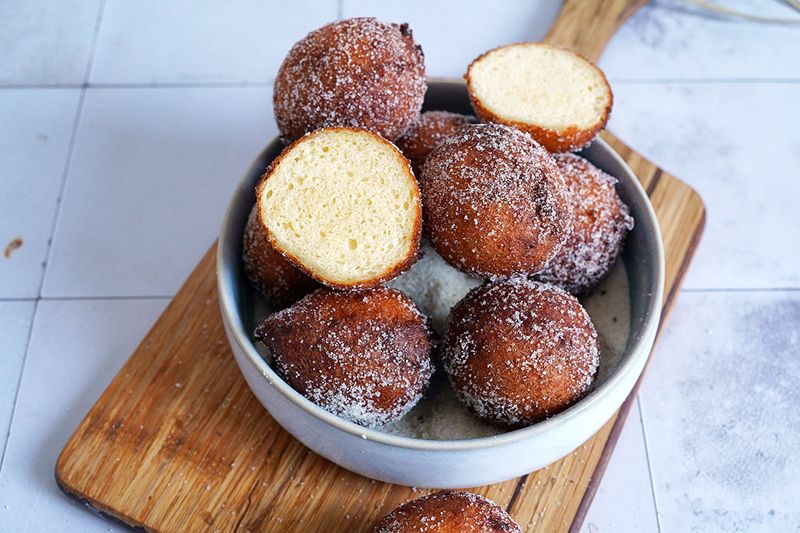
Quarkbällchen, small, fluffy donuts made with quark cheese, are a beloved treat found at fairs and bakeries across Germany.
Their light, airy texture and subtle sweetness make them irresistible, especially when freshly fried and dusted with sugar.
These bite-sized delights offer a comforting taste of everyday joy, evoking memories of childhood and community gatherings, where their warm, inviting aroma draws people together in celebration of simple pleasures.
Berliner Pfannkuchen
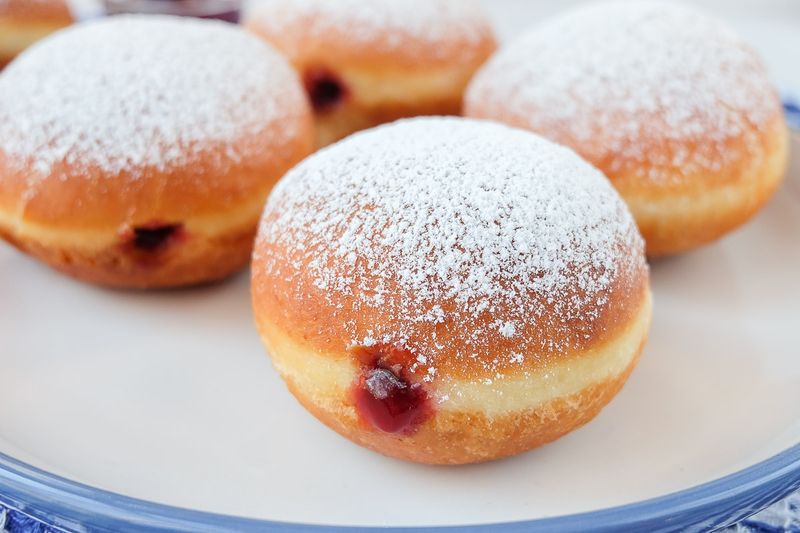
Berliner Pfannkuchen, or simply Berliner, is a jam-filled donut synonymous with festive joy. Traditionally enjoyed during New Year’s Eve, its origins date back to 16th century Berlin.
The soft, pillowy dough, filled with raspberry or plum jam, offers a burst of flavor with each bite, symbolizing happiness and good fortune.
This treat is more than just a pastry; it’s a sweet emblem of German celebration, shared among family and friends, bringing smiles and a touch of nostalgia to the table.
Rote Grütze

Rote Grütze, a red berry compote, is as bold in flavor as it is in color. Made with a mix of berries like raspberries, strawberries, and red currants, it’s a refreshing dessert.
Traditionally enjoyed in Northern Germany, this dish brings the taste of summer to the table, even in the coldest months.
Served warm or cold, often with a splash of cream or vanilla sauce, Rote Grütze is a vibrant celebration of nature’s bounty, offering a taste of the countryside in every spoonful.
Kirschmichel
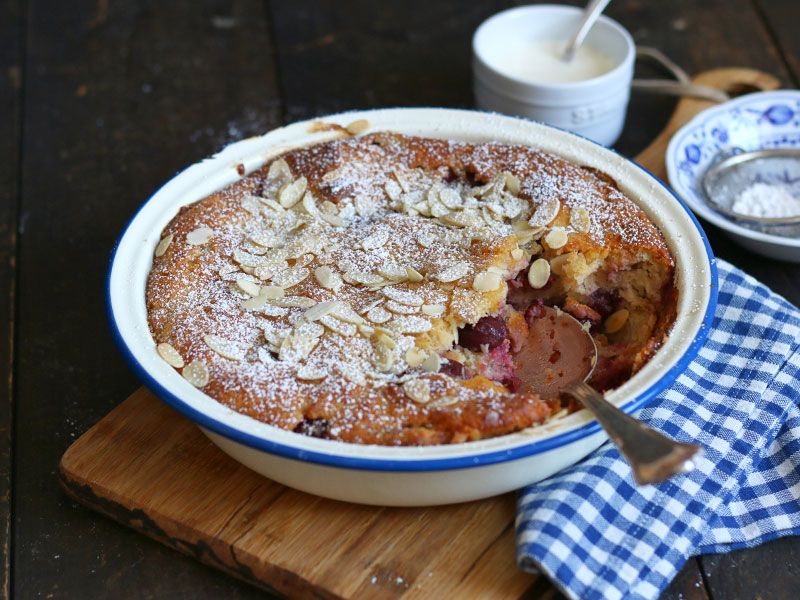
Kirschmichel, a cherry bread pudding, is a comforting dessert that transforms leftover bread into something extraordinary.
This traditional dish, hailing from Southern Germany, combines soaked bread with eggs, milk, and cherries, baked to golden perfection.
The delightful mix of textures and flavors makes Kirschmichel a nostalgic treat, often enjoyed by families as a sweet way to use what they have, turning humble ingredients into a memorable delight.
Dresdner Eierschecke

Dresdner Eierschecke, a layered cake from Dresden, boasts a unique combination of textures. It consists of a thin yeast dough base, a creamy quark layer, and a rich custard topping.
Originating in Saxony, this cake is a delightful blend of flavors and history, often served during family gatherings or special occasions.
With its contrasting layers, each bite offers a harmonious balance of sweetness and creaminess, making it a beloved choice that captures the essence of German baking artistry.
Zwetschgenkuchen
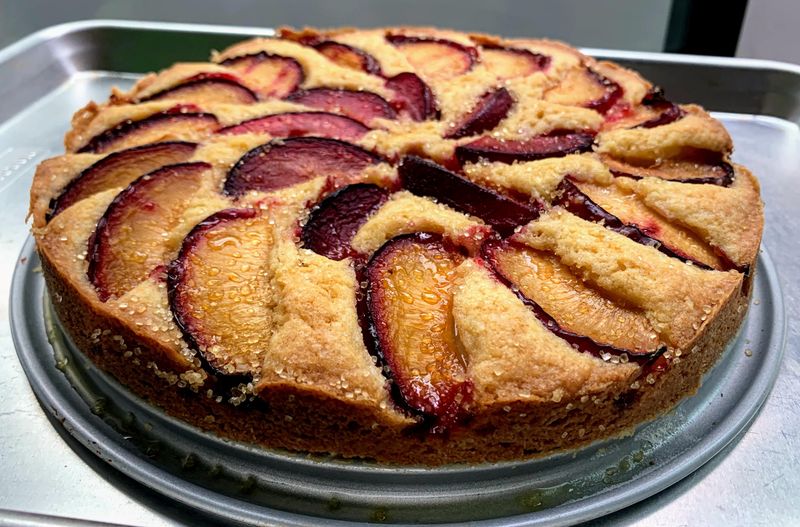
Zwetschgenkuchen, a plum cake, is an autumnal favorite in Germany. Made with ripe, juicy plums atop a buttery dough, it’s simple yet indulgent.
This cake, often baked with a hint of cinnamon, captures the essence of fall, offering warmth and comfort.
Shared during cool afternoons with a cup of coffee, Zwetschgenkuchen brings a taste of home and memories of family kitchens, where the scent of baking plums fills the air with promise and delight.
Schwarzwälder Kirschtorte
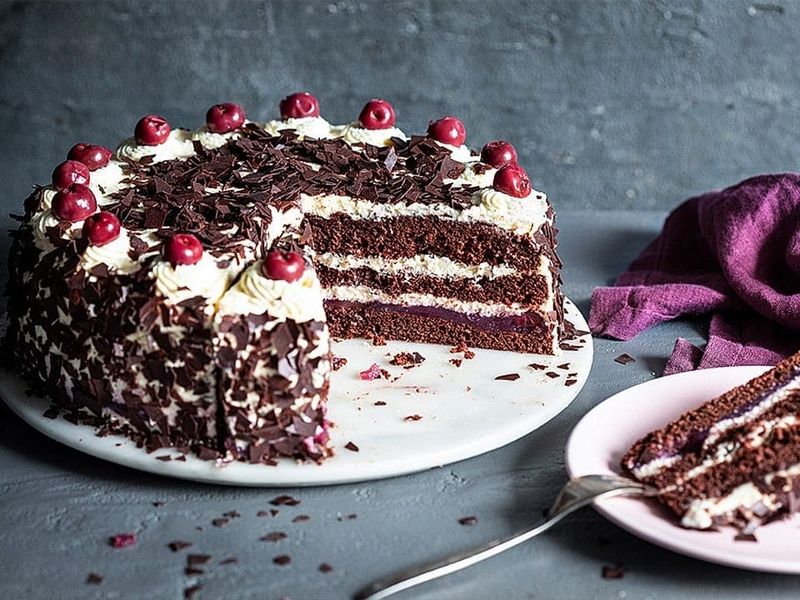
Schwarzwälder Kirschtorte, also known as Black Forest Cake, is a towering dessert of chocolate, cream, and cherries.
Its origins lie in the Black Forest region, where local kirschwasser (cherry brandy) adds a distinctive kick.
This cake is a celebration of indulgence, with each layer telling a story of lush forests and cherry orchards. Perfect for birthdays or anniversaries, its grandeur and rich flavors make it a showstopper at any gathering.
Nussecken
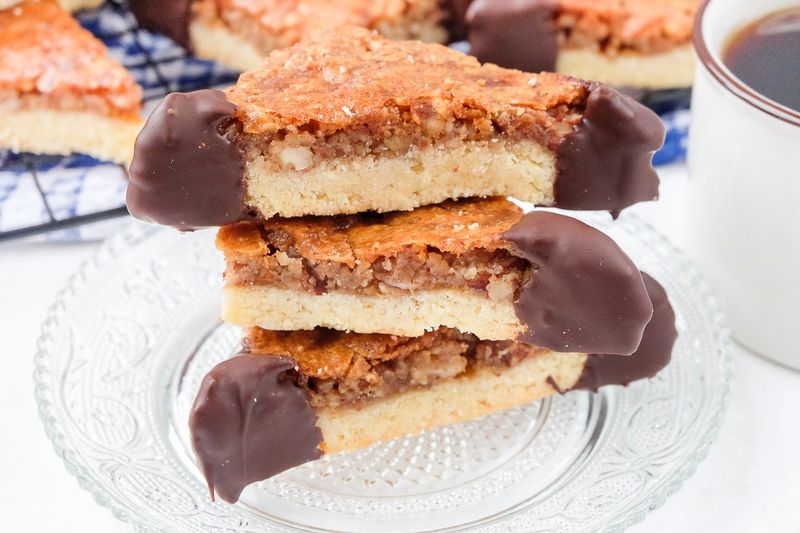
Nussecken, or “nut corners,” are delectable treats that combine shortbread, apricot jam, and a nutty caramel topping.
These buttery bars, often dipped in chocolate, are a testament to the German knack for creating comforting confections.
Perfect with a cup of tea, Nussecken offer a sweet escape, their rich, nutty flavor reminiscent of cozy afternoons spent in quiet indulgence. They showcase the balance between simplicity and richness that defines traditional German baking.
Schneeballen
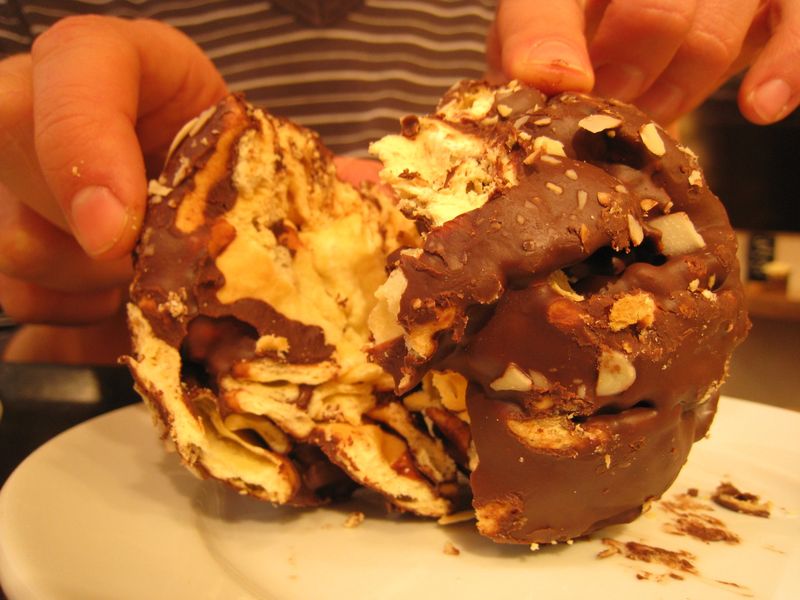
Schneeballen, or “snowballs,” are a Bavarian specialty, traditionally enjoyed during festivals. These round pastries, made from strips of dough, are deep-fried and dusted with sugar.
Their crisp exterior contrasts with a soft, airy interior, making them delightful treats.
Originating from Rothenburg ob der Tauber, Schneeballen offer a whimsical taste of German heritage, their playful appearance and satisfying crunch a nod to festive traditions and the joy of celebration.
Frankfurter Kranz
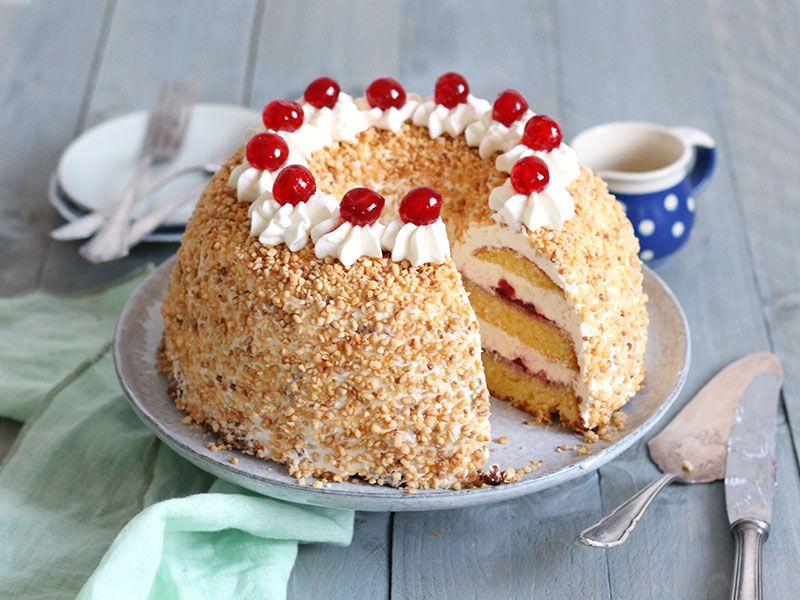
Frankfurter Kranz, or “Frankfurt Crown Cake,” is a regal dessert that embodies elegance and tradition.
Shaped like a crown, it’s layered with buttercream and red jam, encased in golden brittle.
This cake, often served at celebrations, symbolizes prosperity and pride. Each slice offers a rich, creamy taste, a testament to craftsmanship and the grandeur of German pastries, making it a centerpiece for any occasion.
Linzer Torte
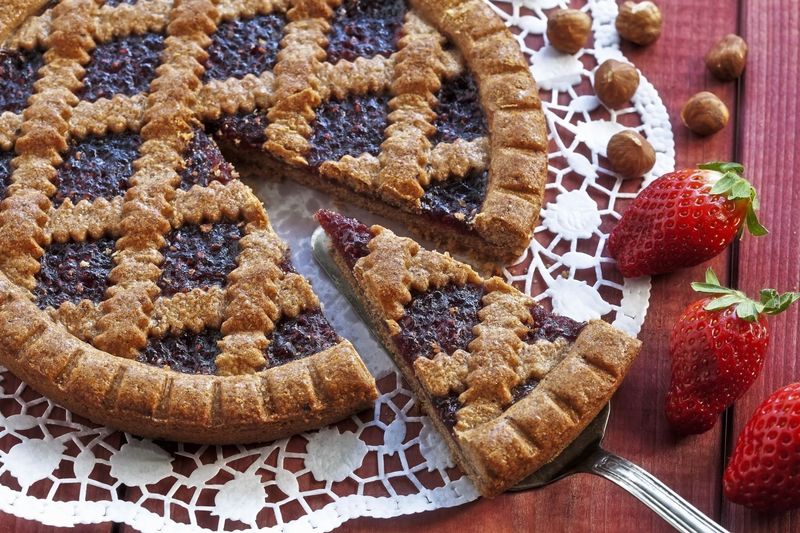
Linzer Torte, with its crumbly crust and raspberry filling, is a symphony of flavors. Originating from Linz, Austria, it’s one of the oldest known tarts.
The nutty, spiced dough, intertwined with a lattice pattern, reveals a vibrant layer of jam beneath.
This torte is a celebration of tradition, its flavors harmonizing beautifully to create a dessert that’s both timeless and inviting, perfect for enjoying with loved ones over a cup of tea.
Rhabarberkuchen
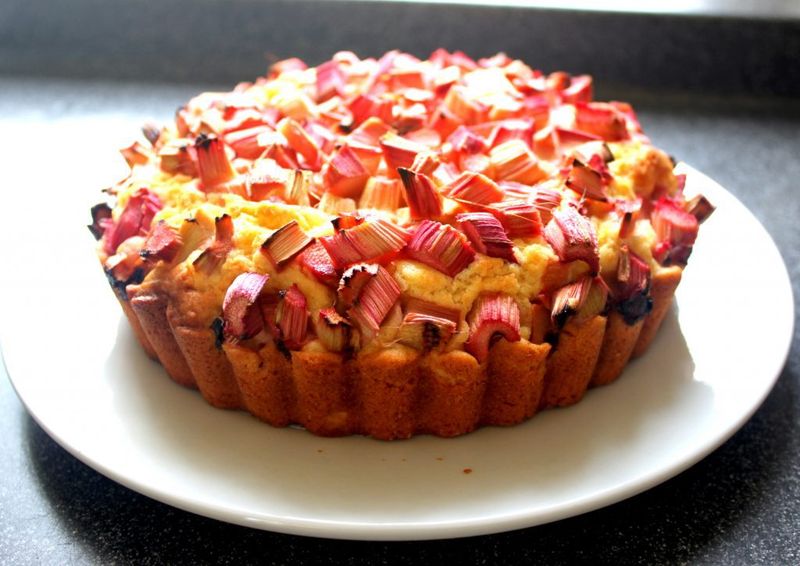
Rhabarberkuchen, or rhubarb cake, is a springtime delight that harnesses the tartness of rhubarb in a sweet, crumbly base.
This cake, often topped with a streusel, offers a refreshing contrast of flavors and textures.
Sharing this dessert is like welcoming the first blooms of spring, its bright taste and vibrant color a nod to the changing seasons. It’s a taste of renewal, each bite a celebration of nature’s bounty.
Spritzgebäck
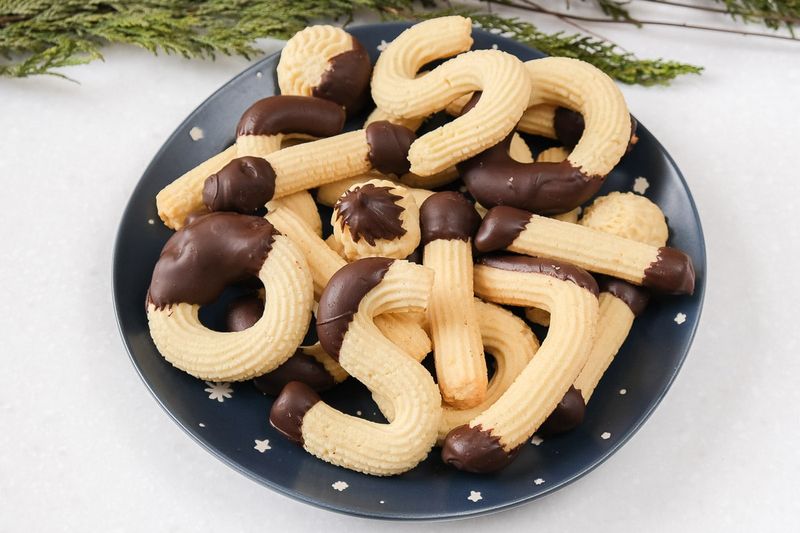
Spritzgebäck, or “squirt cookies,” are delicate butter cookies, often enjoyed during Christmas.
Their intricate shapes, formed by pressing dough through a cookie press, make them as beautiful as they are delicious.
These cookies melt in your mouth, their buttery richness a hallmark of festive baking. They bring warmth and cheer to holiday gatherings, where sharing these treats is a cherished tradition.
Vanillekipferl

Vanillekipferl, crescent-shaped cookies, are a tender nod to the holidays. Made with ground almonds and vanilla, they offer a melt-in-your-mouth experience.
These cookies, with their snowy dusting of vanilla sugar, capture the essence of winter magic.
A symbol of warmth and family, Vanillekipferl are lovingly crafted and shared, bringing smiles to faces young and old, their delicate flavor a sweet reminder of seasonal joy.
Pfeffernüsse
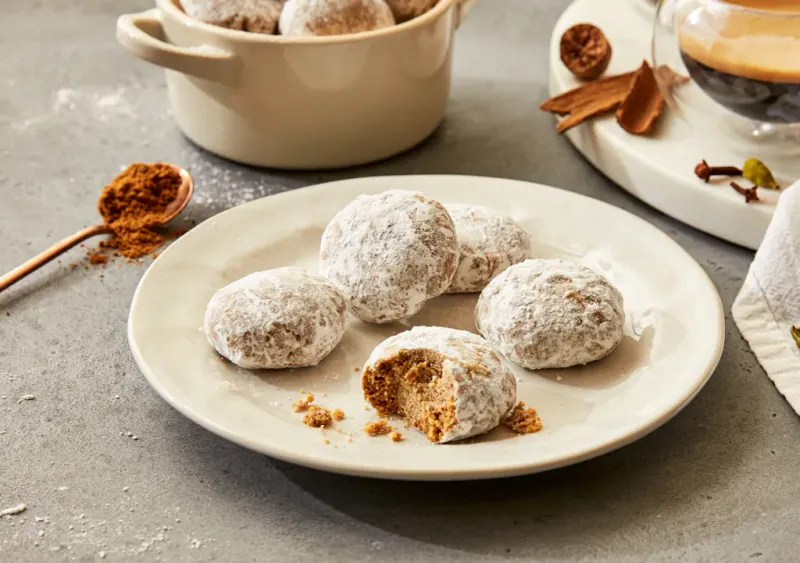
Pfeffernüsse, spiced cookies, are a holiday tradition with a peppery twist.
These small, round cookies blend spices like white pepper, cinnamon, and cloves, creating a uniquely warming flavor.
Their powdered sugar coating adds a touch of sweetness, balancing the spice. Enjoyed during the festive season, Pfeffernüsse evoke the cozy spirit of Christmas, a reminder of gathering with loved ones around a glowing hearth.
Apfelstrudel
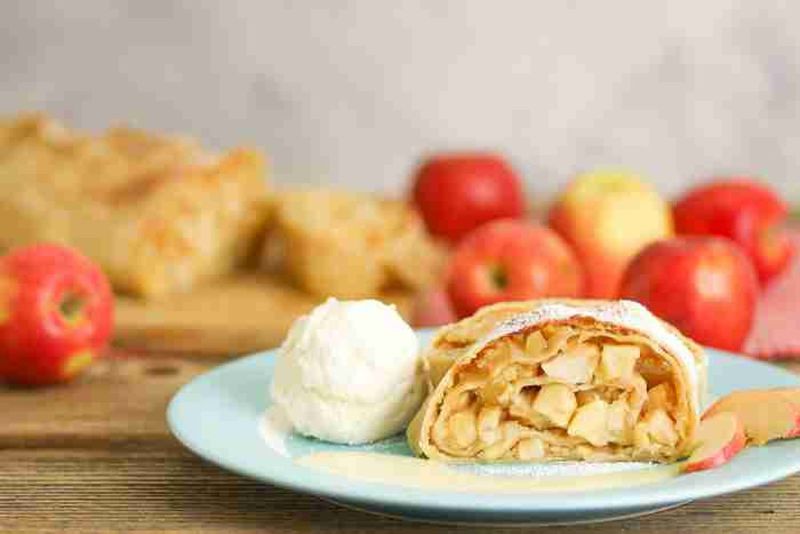
Apfelstrudel, a classic dessert, showcases the elegance of thin, flaky pastry enveloping a filling of spiced apples and raisins.
Originating in Austria and popular throughout Germany, this dessert is often enjoyed warm, with a dollop of cream or ice cream.
Its delicate layers and fragrant filling make Apfelstrudel a beloved treat, offering a taste of comfort and tradition, perfect for sharing on a chilly evening.
Leave a comment